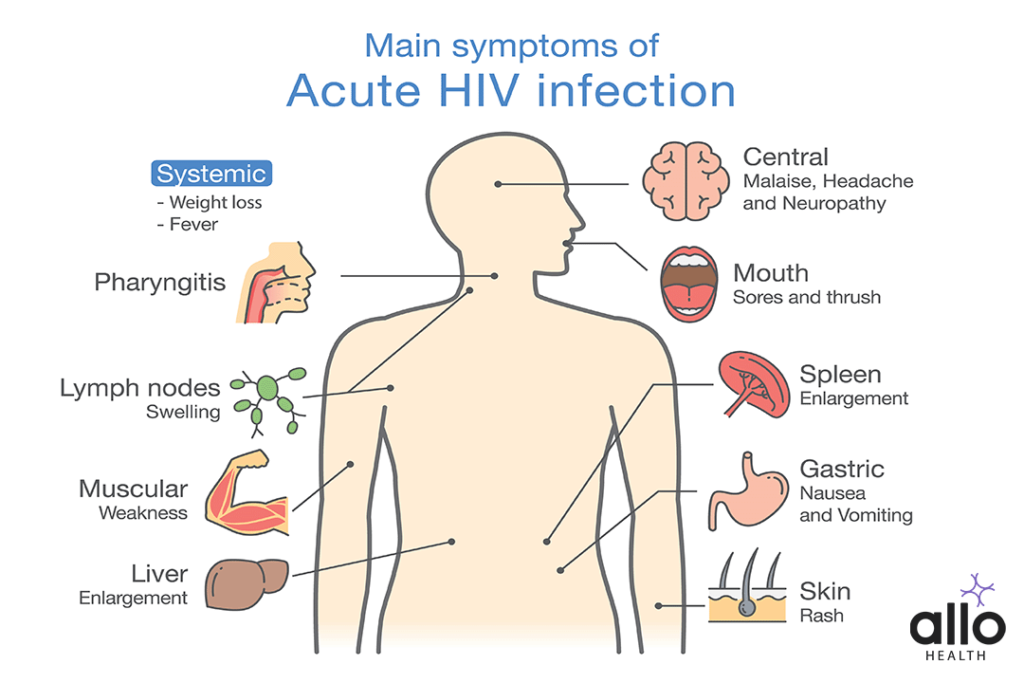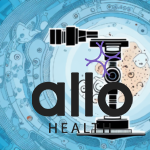HIV/AIDS: Understanding the Basics of this Life-Changing Diagnosis

Allo Health is dedicated to personalized well-being, offering support and trusted information tailored to individual health goals. The platform emphasizes human-generated content, led by a distinguished medical team of experts, including physicians and sexual health specialists. Their commitment to credibility involves rigorous fact-checking, authoritative research, and continuous updates to ensure accurate, up-to-date information. Allo Health's unique approach goes beyond conventional platforms, providing expert-led insights and a continuous commitment to excellence, with user feedback playing a crucial role in shaping the platform's authoritative voice.

Dr Dodda Basavaraj did his MBBS from Vijayanagara Institute Of Medical Sciences, Ballari . His domain of interest always lied in obstetrics , gynaecology and sexual health. He has worked as Medical officer, Tele-consultation doctor at tertiary and primary health care sectors in Karnataka . He believes strongly in medical practice which is evidence based, non-judgemental and patient centric.
Why This Was Upated?
Our experts continually monitor the health and wellness space, and we update our articles when new information became available.
Updated on 01 June, 2024
- Article was updated as part of our commitment to diversity, equity, and inclusion.

"The following blog article provides general information and insights on various topics. However, it is important to note that the information presented is not intended as professional advice in any specific field or area. The content of this blog is for general educational and informational purposes only.
Book consultation
The content should not be interpreted as endorsement, recommendation, or guarantee of any product, service, or information mentioned. Readers are solely responsible for the decisions and actions they take based on the information provided in this blog. It is essential to exercise individual judgment, critical thinking, and personal responsibility when applying or implementing any information or suggestions discussed in the blog."
What Is HIV/AIDS?
Human Immunodeficiency Virus (HIV) is a virus that attacks the immune system of an individual, compromising the body’s ability to fight off infections and diseases. If left untreated HIV infection can cause Acquired Immunodeficiency Syndrome (AIDS), a condition in which the immune system is severely damaged, making the person vulnerable to?various life-threatening infections and cancers.
?
HIV is transmitted through bodily fluids, such as blood, semen, vaginal fluids, and breast milk. The most common modes of transmission are unprotected sexual intercourse, sharing needles or syringes with an infected person,?emergency blood transfusion , organ transplantation and mother-to-child transmission during pregnancy, childbirth, or breastfeeding.
Types of HIV
?
HIV-1
?
HIV-1 is the most common type of HIV, accounting for the majority of HIV infections worldwide. HIV-1 is further divided into three subtypes – A, B, and C. Subtype B is the most common strain of HIV in the United States and Europe, while subtype C is the most common in Africa and Asia.
?
HIV-2
?
HIV-2 is less common than HIV-1 and is found primarily in West Africa. HIV-2 is also less virulent than HIV-1, meaning that it progresses more slowly and is less likely to cause AIDS. HIV-2 is also less easily transmitted than HIV-1, making it less of a public health threat.
?
Group O HIV
?
Group O HIV is a rare strain of HIV that is primarily found in West and Central Africa. Group O HIV is different from the other strains of HIV in that it has a different genetic makeup, making it more difficult to detect through standard HIV tests. Group O HIV is also less virulent than other strains of HIV, but it can still cause AIDS.
?
Group N HIV
?
Group N HIV is another rare strain of HIV that is primarily found in Cameroon. Group N HIV is similar to Group O HIV in that it has a different genetic makeup, making it more difficult to detect through standard HIV tests. Group N HIV is also less virulent than other strains of HIV, but it can still cause AIDS.
?
CRF HIV
?
CRF HIV (Circulating Recombinant Form HIV) is a strain of HIV that is created when two or more different strains of HIV combine to form a new strain. CRF HIV is found primarily in areas where multiple strains of HIV are prevalent, such as sub-Saharan Africa and Southeast Asia. CRF HIV is particularly dangerous because it combines the characteristics of multiple strains of HIV, making it more virulent and more difficult to treat.
Causes of HIV
?
HIV is primarily spread through sexual contact, sharing of needles, and from mother to child during childbirth or breastfeeding. However, there are several other causes of HIV/AIDS that are less commonly known.
?
Unprotected Sexual Contact
?
Unprotected sexual contact is the most common cause of HIV/AIDS worldwide. The virus can be transmitted through vaginal, anal, or oral sex with an infected person. The risk of transmission increases with the number of sexual partners, and unprotected sex with an infected person can increase the risk of transmission by up to 20 times.
?
Sharing of Needles
?
Sharing needles and other drug injection equipment with an infected person can also spread HIV. This is because the virus can be present in the blood of an infected person and can easily be transmitted to another person through shared needles.
?
Mother-to-Child Transmission
?
HIV can be transmitted from an infected mother to her baby during childbirth or through breastfeeding. This type of transmission is known as vertical transmission, and it can occur at any stage during pregnancy, childbirth, or breastfeeding. The risk of transmission can be significantly reduced with proper medical care and antiretroviral therapy during pregnancy, delivery and breast feeding.
?
Blood Transfusions and Organ Transplants
?
Blood transfusions and organ transplants are potential causes of HIV/AIDS if the blood or organs come from an infected donor. However, these modes of transmission are extremely rare in developed countries due to strict screening procedures for blood and organ donors?but they remain a potential mode of transmission in underdeveloped and developing countries.
?
Occupational Exposure
?
Healthcare workers, laboratory workers, and emergency responders are at an increased risk of HIV/AIDS due to accidental exposure to infected blood or bodily fluids. This type of exposure is known as occupational exposure and can occur through needle stick injuries or exposure to infected bodily fluids.
?
Sexual Assault
?
Sexual assault is a traumatic experience that can also result in HIV/AIDS transmission. This is because the perpetrator may be infected with HIV, and sexual assault survivors may not have access to preventive measures such as post-exposure prophylaxis (PEP) to prevent HIV transmission.
Symptoms of HIV

Here are some of the most common symptoms of HIV:
-
Flu-like symptoms: Many people experience flu-like symptoms, such as fever, chills, sore throat, and fatigue, within two to four weeks after contracting HIV. This is known as acute HIV infection and can last for several weeks.
-
Rash: A rash can occur in people with acute HIV infection. It usually appears on the trunk of the body and can be itchy.
-
Swollen lymph nodes: HIV can cause swelling of the lymph nodes, which are part of the immune system. The lymph nodes in the neck, armpits, and groin can become enlarged and tender.
-
Muscle and joint pain: HIV can cause muscle and joint pain, which can be mistaken for arthritis. This can occur during acute HIV infection or later stages of the disease.
-
Headache: HIV can cause headaches, which can be severe in some cases. They may occur during acute HIV infection or later stages of the disease.
-
Night sweats: Many people with HIV experience night sweats, which can be severe enough to wake them up from sleep. This can occur during acute HIV infection or later stages of the disease.
-
Fatigue: HIV can cause fatigue, which can be severe and persistent. This can occur during acute HIV infection or later stages of the disease.
-
Nausea, vomiting, and diarrhea: HIV can cause gastrointestinal symptoms, such as nausea, vomiting, and diarrhea. These symptoms can be caused by the virus itself or by medications used to treat HIV.
-
Weight loss: HIV can cause unintentional weight loss, which can be significant in some cases. This can occur during acute HIV infection or later stages of the disease.
Not everyone with HIV will experience symptoms. Some people may not develop symptoms until later stages of the disease. Additionally, some symptoms of HIV can be caused by other conditions. It is important to talk to a healthcare provider if you are experiencing any symptoms, especially if you have been at risk for?contracted with HIV.
Risk Factors of HIV
?
HIV (Human Immunodeficiency Virus) is a global public health concern, with an estimated 38 million people living with the virus worldwide. HIV can lead to the development of AIDS (Acquired Immunodeficiency Syndrome), which is a severe form of immune system failure. While there is currently no cure for HIV, early detection and treatment can significantly improve outcomes for individuals living with the virus. Understanding the risk factors for HIV is essential for preventing transmission and improving overall public health.
?
Here are some of the key risk factors associated with HIV:
?
Unprotected Sexual Activity
?
The primary mode of HIV transmission is through unprotected sexual activity. This includes vaginal, anal, and oral sex. The risk of HIV transmission increases when there is a high viral load in the infected partner, which can occur during acute infection or when the virus is not well-controlled with antiretroviral therapy (ART). Additionally, certain sexual practices, such as anal sex, may increase the risk of transmission due to the fragile nature of the tissues involved.
?
Sharing Needles
?
Sharing needles or syringes with an HIV-positive individual can also increase the risk of infection. This includes sharing needles for drug injection or medical procedures. The virus can be transmitted through blood, so it is essential to use clean needles and syringes to prevent transmission.
?
Blood Transfusions and Organ Transplants
?
Before the introduction of screening protocols in the mid-1980s, blood transfusions and organ transplants were a significant risk factor for HIV transmission. Today, the risk of transmission through blood transfusions and organ transplants is extremely low due to rigorous screening protocols.
?
Mother-to-Child Transmission
?
HIV can be transmitted from an HIV-positive mother to her child during pregnancy, delivery, or breastfeeding. With proper treatment during pregnancy, delivery, and breastfeeding, the risk of mother-to-child transmission can be greatly reduced.
?
Occupational Exposure
?
Healthcare workers and first responders may be at increased risk of HIV transmission through occupational exposure. This can occur through needlestick injuries or exposure to contaminated bodily fluids. Proper infection control protocols, including the use of personal protective equipment and safe needle handling practices, can greatly reduce the risk of transmission.
?
Other Sexually Transmitted Infections
?
Having other sexually transmitted infections (STIs) can increase the risk of HIV transmission. This is because STIs can cause inflammation and damage to the genital tissues, making it easier for the virus to enter the bloodstream.
?
Substance Abuse
?
Substance abuse, particularly injection drug use, is a significant risk factor for HIV transmission. This is due to the sharing of needles and syringes, as well as increased risk-taking behaviors associated with drug use.
?
In conclusion, HIV is a serious public health concern that can be prevented through a combination of education, prevention strategies, and early detection and treatment. Understanding the risk factors associated with HIV is essential for preventing transmission and improving overall public health. Protecting oneself by practicing safe sex, avoiding sharing needles or syringes, and getting regular HIV testing can help reduce the risk of contracting HIV.
Types Of Viruses That Can Cause HIV
?
HIV-1
?
HIV-1 is the most common type of virus that causes HIV/AIDS. It is responsible for the majority of cases of the disease worldwide. HIV-1 is divided into several groups, including Group M, Group N, and Group O. Group M is the most prevalent, accounting for more than 90% of all HIV-1 infections.
?
HIV-1 is transmitted through the exchange of bodily fluids, such as blood, semen, vaginal fluids, and breast milk. The virus can be transmitted through sexual contact, sharing needles or syringes, or from mother to child during pregnancy, childbirth, or breastfeeding.
?
HIV-2
?
HIV-2 is a less common type of virus that causes HIV/AIDS. It is found primarily in West Africa and accounts for a small percentage of HIV infections worldwide. HIV-2 is similar to HIV-1 in its symptoms and progression but is less virulent.
?
HIV-2 is transmitted through the same methods as HIV-1, including sexual contact, sharing needles or syringes, and mother-to-child transmission.
?
Simian Immunodeficiency Virus (SIV)
?
Simian immunodeficiency virus (SIV) is a virus that infects primates, including monkeys and apes. SIV is similar to HIV in its structure and is thought to have originated from a cross-species transmission of the virus from chimpanzees to humans.
?
Although SIV does not cause disease in primates, it can be deadly when transmitted to humans. SIV is believed to have given rise to HIV-1, which is responsible for the majority of HIV infections worldwide.
?
Visna/Maedi virus
?
Visna/Maedi virus is a lentivirus that infects sheep and goats. It is similar to HIV in its structure and mode of transmission. The virus is primarily spread through close contact with infected animals, such as through the sharing of needles or through sexual contact.
?
Although Visna/Maedi virus is not known to infect humans, it is a significant concern for the agricultural industry, as it can cause respiratory disease in sheep and goats, leading to reduced milk production and weight loss.
?
Feline Immunodeficiency Virus (FIV)
?
Feline immunodeficiency virus (FIV) is a lentivirus that infects cats. It is similar to HIV in its structure and mode of transmission. FIV is primarily spread through bites from infected cats, but it can also be transmitted through sexual contact and from mother to kitten during childbirth or breastfeeding.
?
Although FIV is not known to infect humans, it is a significant concern for cat owners, as it can cause a weakened immune system and lead to other infections and diseases.
Testing For HIV: What To Expect
?
Testing for HIV/AIDS is an essential part of maintaining your sexual health. HIV, or human immunodeficiency virus, attacks your body’s immune system and can lead to AIDS, a serious and often life-threatening condition. While HIV/AIDS used to be considered a death sentence, advances in medical treatment have made it possible to live a long and healthy life with the condition. Early diagnosis is crucial, so it’s important to understand what to expect when getting tested.
?
Why Get Tested for HIV/AIDS?
?
Getting tested for HIV/AIDS is important for several reasons. First and foremost, if you have HIV, early diagnosis can help you start treatment as soon as possible. With proper medical care, many people with HIV can live a long and healthy life. Early diagnosis also helps prevent the spread of HIV to others. If you know you have HIV, you can take steps to prevent transmitting it to your sexual partners.
?
What to Expect During an HIV/AIDS Test?
?
When getting tested for HIV/AIDS, there are a few things to expect. The first step is typically a blood test. The test looks for antibodies to HIV in your blood. If you have been exposed to HIV, your body will produce antibodies to fight the virus, which can be detected in your blood.
?
There are also rapid HIV tests available that can give you results in as little as 20 minutes. These tests are often used at clinics and health fairs, as they are quick and easy to administer. However, these tests are not as accurate as blood tests, so if you get a positive result, you will need to follow up with a confirmatory blood test.
?
If you have recently been exposed to HIV, it may take several weeks or even months for the virus to show up in your blood. This is known as the “window period,” and it’s why doctors often recommend getting tested again a few months after potential exposure.
?
Preparing for an HIV/AIDS Test
?
There is no special preparation required for an HIV/AIDS test. However, it’s a good idea to avoid drinking alcohol or taking drugs before the test, as these substances can impair your judgment and increase your risk of exposure to HIV.
?
It’s also important to be honest with your healthcare provider about your sexual history and any other risk factors for HIV exposure. This information can help your healthcare provider make the best recommendations for testing and treatment.
?
What Happens After an HIV/AIDS Test?
?
If your HIV/AIDS test is negative, you will likely not need any further testing unless you have been exposed to the virus again. If your test is positive, your healthcare provider will likely recommend further testing to confirm the diagnosis. They will also talk to you about treatment options and provide you with information and resources to help you manage your condition.
Treatment of HIV
?
HIV, which stands for Human Immunodeficiency Virus, is a virus that attacks the immune system and can lead to Acquired Immune Deficiency Syndrome (AIDS) if left untreated. Fortunately, there are several types of treatment options available for people living with HIV.
?
Antiretroviral Therapy (ART)
?
Antiretroviral therapy, commonly known as ART, is the most common type of treatment for HIV. ART works by slowing down the replication of the virus in the body, which helps to prevent damage to the immune system. This treatment involves taking a combination of antiretroviral medications every day for the rest of your life.
?
ART is highly effective at suppressing the virus and can help people with HIV live long and healthy lives. In addition to reducing the amount of virus in the body, ART also helps to prevent the transmission of HIV to others. This makes it an important tool in the fight against the spread of HIV.
?
Pre-Exposure Prophylaxis (PrEP)
?
Pre-exposure prophylaxis, or PrEP, is a type of medication that can help prevent HIV infection. PrEP is taken by people who are at high risk of contracting HIV, such as those with a partner who has HIV or those who engage in unprotected sex.
?
PrEP works by blocking the virus from replicating in the body, which helps to prevent infection. When taken consistently, PrEP can reduce the risk of HIV infection by up to 99%.
?
Post-Exposure Prophylaxis (PEP)
?
Post-exposure prophylaxis, or PEP, is a type of medication that is taken after a potential exposure to HIV. PEP is typically used in emergency situations, such as after unprotected sex or needle sharing.
?
PEP works by stopping the virus from replicating in the body before it can establish an infection. PEP must be started within 72 hours of exposure to be effective.
?
Combination Prevention
?
Combination prevention is a comprehensive approach for preventing the spread of HIV that involves multiple strategies. This may include using condoms during sex, taking PrEP, getting regular HIV testing, and using clean needles if injecting drugs.
?
Combination prevention is highly effective at reducing the risk of HIV transmission. By using multiple strategies together, it is possible to significantly reduce the risk of contracting HIV.
?
Alternative and Complementary Therapies
?
In addition to traditional medical treatments, there are also alternative and complementary therapies that may be used to treat HIV. These may include things like acupuncture, herbal medicine, and massage therapy.
?
While these therapies may have some benefits, it is important to remember that they are not a substitute for traditional medical treatments like ART. It is also important to talk to your healthcare provider before starting any alternative or complementary therapies to ensure that they are safe and effective for you.
How Can HIV Affect Your Sex Life?
?
HIV or Human Immunodeficiency Virus is a sexually transmitted infection that affects millions of people worldwide. This virus attacks the immune system, making it difficult for the body to fight off infections and diseases. In addition to the physical health effects, HIV can also have a significant impact on one’s sex life.
?
The Impact of HIV on Sexual Functioning. HIV can have a variety of effects on sexual functioning, including:
-
Erectile dysfunction:?Men living with HIV may experience difficulties achieving or maintaining an erection, which can impact sexual satisfaction.
-
Decreased libido:?Both men and women may experience a decrease in sex drive as a result of HIV.
-
Painful intercourse: Women with HIV may experience pain during intercourse due to vaginal dryness or infections.
-
Reduced fertility: HIV can impact fertility in both men and women, making it more difficult to conceive.
-
Increased risk of sexually transmitted infections:?People living with HIV are more susceptible to other sexually transmitted infections, such as herpes, chlamydia, and gonorrhea.
Managing HIV and Sexual Health
?
Fortunately, there are steps you can take to minimize the impact of HIV on your sex life. These include:
-
Consistent use of condoms: Condoms are one of the most effective ways to reduce the risk of HIV transmission during sexual activity.
-
Antiretroviral therapy: Antiretroviral therapy (ART) can help manage HIV and reduce the risk of transmission. It is important to take ART as prescribed and to continue regular check-ups with a healthcare provider.
-
Lubricants: Using a water-based lubricant during sexual activity can help reduce pain and discomfort.
-
Regular sexual health check-ups: Regular check-ups with a health care provider can help detect and treat any sexually transmitted infections.
-
Open communication: Communication with sexual partners is key to managing HIV and reducing the risk of transmission. It is important to discuss HIV status, sexual preferences, and any concerns related to sexual health.
What Doctor Do You Go To?

When it comes to HIV/AIDS, it’s important to seek medical care from a qualified healthcare professional who has experience in treating and managing the condition. This may involve visiting a variety of different doctors and health care providers, depending on your specific needs and circumstances.
?
The primary care physician or family doctor is often the first point of contact for people with HIV/AIDS. They can perform initial testing and diagnosis, provide basic education about the condition, and refer you to a specialist if necessary. Your primary care doctor can also monitor your overall health and coordinate your care with other healthcare providers.
?
In addition to a primary care physician, there are several other types of healthcare professionals who specialize in HIV/AIDS care, including infectious disease specialists, HIV specialists, and immunologists. These doctors have received specialized training in managing HIV/AIDS and may have more experience with the latest treatment options and medications.
?
Infectious disease specialists are medical doctors who specialize in the diagnosis and treatment of infectious diseases, including HIV/AIDS. They can provide specialized care and treatment for people living with HIV/AIDS, including managing complications and side effects of medications.
?
HIV specialists, also known as HIV/AIDS specialists or HIV clinicians, are doctors who have received advanced training in HIV/AIDS care. They can provide comprehensive care for people living with HIV/AIDS, including prescribing antiretroviral therapy (ART) medications, monitoring viral load and CD4 cell counts, and managing complications and side effects of treatment.
?
Immunologists are doctors who specialize in the immune system and its related disorders. They can provide specialized care for people with HIV/AIDS, including managing immunodeficiency and related complications.
?
In addition to medical doctors, there are also other healthcare professionals who play an important role in HIV/AIDS care. These may include nurses, pharmacists, social workers, and mental health professionals. Nurses can provide ongoing monitoring and education about HIV/AIDS and its treatment, while pharmacists can help manage medications and provide advice about drug interactions and side effects. Social workers and mental health professionals can provide emotional support and counseling for people living with HIV/AIDS, as well as help with practical concerns such as housing and financial assistance.
Complications From Untreated HIV
?
Human Immunodeficiency Virus (HIV) is a viral infection that attacks the immune system, weakening it and making it difficult for the body to fight off infections and diseases. Acquired Immunodeficiency Syndrome (AIDS) is a late-stage HIV infection, which is characterized by a severely weakened immune system, and can lead to life-threatening complications.
-
Opportunistic Infections: When the immune system is weakened due to untreated HIV/AIDS, the body becomes vulnerable to opportunistic infections. These infections can be caused by viruses, bacteria, fungi, and other pathogens that a healthy immune system would usually fight off. Some common opportunistic infections associated with untreated HIV/AIDS include pneumonia, tuberculosis, and fungal infections.
-
Neurological Complications: HIV/AIDS can cause neurological complications such as dementia, peripheral neuropathy, and meningitis. These complications can lead to memory loss, difficulty thinking, numbness or tingling in the hands and feet, and other neurological symptoms.
-
Cardiovascular Disease: Untreated HIV/AIDS can increase the risk of cardiovascular disease, including heart attack and stroke. HIV can cause inflammation in the blood vessels, leading to atherosclerosis, a condition in which the arteries become narrowed and hardened, making it difficult for blood to flow through.
-
Kidney Disease: HIV/AIDS can also cause kidney disease, which can progress to kidney failure if left untreated. This can lead to a buildup of waste products and fluids in the body, resulting in symptoms such as swelling in the legs, feet, or ankles, fatigue, and shortness of breath.
-
Cancers: HIV/AIDS can increase the risk of certain cancers, such as Kaposi’s sarcoma, non-Hodgkin’s lymphoma, and cervical cancer. These cancers are more likely to develop in people with weakened immune systems.
The Importance of Early Diagnosis and Treatment
?
Early diagnosis and treatment of HIV/AIDS can help prevent the development of complications and improve the quality of life for people living with the virus. Antiretroviral therapy (ART) is the standard treatment for HIV/AIDS, and it can help suppress the virus, allowing the immune system to recover.
?
ART can also help prevent the transmission of HIV to others. People who are diagnosed early and start treatment early are less likely to develop complications and can expect to live a long and healthy life.
You Shouldn’t Be Embarrassed About Having HIV
?
Human immunodeficiency virus (HIV) is a virus that attacks the immune system, compromising the body’s ability to fight off infections and diseases. Unfortunately, there is still a lot of stigma surrounding HIV, which can cause individuals to feel ashamed or embarrassed about their status. However, there are many reasons why you should never feel embarrassed about having HIV.
?
HIV is a medical condition, not a moral failing
?
First and foremost, it’s essential to understand that having HIV is a medical condition, not a moral failing. HIV does not discriminate and can affect anyone, regardless of their background or lifestyle choices. Contracting HIV does not mean that you are a bad person or that you did anything wrong. It’s a virus that can be contracted through various means, including sexual contact, sharing needles, or from mother to child during pregnancy, childbirth, or breastfeeding. There is no shame in having a medical condition, and HIV is no exception.
?
HIV is manageable with medication
?
Thanks to advances in modern medicine, HIV is now a manageable condition. There are antiretroviral therapies (ART) available that can suppress the virus and help individuals live long, healthy lives. With proper treatment, people with HIV can have a near-normal life expectancy and can even have children without passing the virus to their partners or children. So, having HIV is not a death sentence, nor does it mean that you cannot lead a fulfilling life.
?
HIV is not as contagious as people think
?
One of the most common misconceptions about HIV is that it’s highly contagious and easy to spread. However, that’s not entirely true. HIV is primarily spread through specific bodily fluids, such as blood, semen, vaginal fluids, and breast milk. It is not spread through casual contact, such as hugging, kissing, or sharing utensils. HIV is also not spread through insect bites, like mosquitoes or ticks. So, the likelihood of transmitting the virus is relatively low, as long as you take the necessary precautions.
?
Being open about your HIV status can help reduce stigma
?
By being open about your HIV status, you can help reduce stigma and educate others about the realities of living with the virus. HIV stigma is still prevalent in many communities, which can make it challenging for individuals to disclose their status. However, by speaking openly and honestly about your experiences, you can help break down barriers and change people’s perceptions. When more people feel comfortable disclosing their status, it helps to reduce stigma and discrimination, which benefits everyone living with HIV.
?
You are not alone
?
Finally, it’s crucial to remember that you are not alone. Millions of people worldwide are living with HIV, and there are many resources available to help you manage your condition. There are support groups, counseling services, and medical professionals who specialize in treating HIV. By reaching out and connecting with others who are living with HIV, you can find the support and guidance you need to thrive.
How To Approach Intimacy With A HIV Diagnosis
?
Intimacy is a crucial aspect of human life, and it is natural for people to seek love, affection, and physical touch. However, for those living with a HIV diagnosis, the prospect of intimacy can be challenging and overwhelming. The stigma and discrimination associated with HIV can make it challenging to navigate relationships, and many people living with HIV may feel isolated or alone. Despite these challenges, it is possible to approach intimacy with a HIV diagnosis in a safe and healthy manner. Here are some tips on how to do so.
?
Educate yourself and your partner
?
The first step in approaching intimacy with a HIV diagnosis is to educate yourself and your partner about HIV. Learn about the transmission of HIV, the treatment options available, and the ways to protect yourself and your partner from transmission. It is essential to understand that HIV can be transmitted through sexual contact, sharing needles, and mother-to-child transmission during pregnancy, childbirth, or breastfeeding. However, with proper treatment and preventive measures, the risk of transmission can be greatly reduced.
?
Communicate openly and honestly
?
Effective communication is key to any relationship, but it is especially important when navigating intimacy with a HIV diagnosis. Be honest with your partner about your HIV status, and discuss any concerns or fears you may have. It is also important to listen to your partner’s thoughts and feelings, and to address any questions or concerns they may have. Remember that open communication can help to build trust and intimacy in a relationship.
?
Practice safe sex
?
Practicing safe sex is essential when approaching intimacy with a HIV diagnosis. Use condoms or other barrier methods during sexual contact to reduce the risk of transmission. If you are in a long-term relationship, consider talking to your partner about pre-exposure prophylaxis (PrEP) or post-exposure prophylaxis (PEP) as additional measures of protection.
?
Take care of yourself
?
Living with HIV can be emotionally and physically challenging, and it is essential to take care of yourself. Take your medication as prescribed, eat a healthy diet, exercise regularly, and get plenty of rest. Practice stress-reducing techniques such as meditation, yoga, or deep breathing exercises. By taking care of yourself, you will be better able to approach intimacy with a HIV diagnosis in a positive and healthy manner.
?
Seek support
?
Living with a HIV diagnosis can be isolating, but it is important to remember that you are not alone. Seek support from friends, family, or a healthcare professional. Consider joining a support group for people living with HIV, or seek out online communities where you can connect with others who share similar experiences. By seeking support, you can build a network of people who understand and support you.
Frequently Asked Questions
Q: How is HIV diagnosed?
A: HIV is diagnosed through a blood test that detects the presence of antibodies to the virus. It may take several weeks or months after infection for these antibodies to appear in the blood. Rapid tests that provide results in 20 minutes are also available.
?
Q: Is there a cure for HIV/AIDS?
A: Currently, there is no cure for HIV/AIDS. However, antiretroviral therapy (ART) can significantly slow down the progression of the disease and improve the quality of life of people living with HIV/AIDS.
?
Q: Can HIV be prevented?
A: Yes, HIV can be prevented. Prevention strategies include practicing safe sex (using condoms), not sharing needles or syringes, and getting tested regularly for HIV. Pre-exposure prophylaxis (PrEP) is also available for people who are at high risk of acquiring HIV.
?
Q: Can people with HIV/AIDS have children?
A: Yes, people with HIV/AIDS can have children. With proper medical care, the risk of mother-to-child transmission can be greatly reduced. In some cases, assisted reproductive technologies such as in vitro fertilization (IVF) may be used.
?
Q: Is it safe to have sex with someone who is HIV-positive?
A: Yes, it is possible to have safe sex with someone who is HIV-positive. Using condoms and taking antiretroviral medications as prescribed can greatly reduce the risk of transmission. However, it is important to disclose HIV status to sexual partners and practice open communication about sexual health.
Sexual health is as important as physical and mental health. In most cases, one consultation can go a long way. Personalised, discreet, and judgement-free treatment at your fingertips – book an online consultation with one of Allo?s leading experts.






































